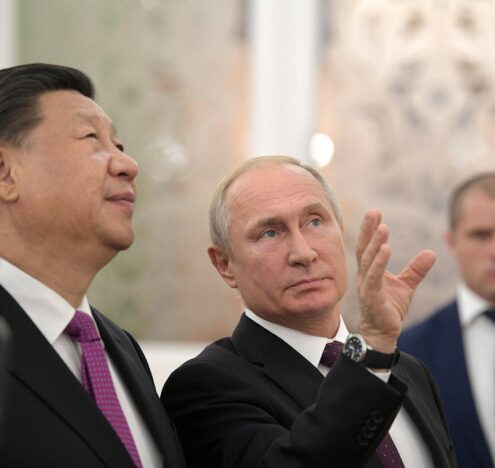On March 26, 2024, Pakistan experienced its fifth militant attack in just 10 days, altogether resulting in at least 18 deaths to civilians and security personnel. Of more concern for Pakistan is the target of the latter three attacks. Despite occurring in the separate provinces of Balochistan and Khyber Pakhtunkhwa, all were aimed at Chinese interests.
The security situation in Pakistan has been spiraling out of control for over three years now. Mass casualty attacks have increased in tandem with the political chaos that has gripped Islamabad since Imran Khan’s ouster in April 2022. During this tumultuous period, China has been the only major power willing to unequivocally stand beside Pakistan, but even this relationship appears on the cusp of fracture after last month’s uptick in violence.
Beijing’s willingness to stand by Islamabad in recent years should not be misinterpreted as blind loyalty from the Chinese Communist Party (CCP). Rather, the CCP has been determined to make a success out of the China-Pakistan Economic Corridor (CPEC), arguably the centrepiece of the whole Belt and Road Initiative (BRI). Through investment totaling more than $60 billion dollars, China has attempted to carve a pathway from Xinjiang down to Balochistan, where, through the Gwadar Port, the CCP will have access to the Arabian Sea. Official messaging about CPEC from both the Pakistani government and Chinese state-owned media have stressed the mutual benefit of the project to both countries, from improved infrastructure and greater connectivity, to mass job creation.
However, research by independent analysts has raised questions over the true benefit of the scheme to Pakistan, pointing towards the colossal debt that Islamabad has accumulated in the process.
Mutual Support
This notwithstanding, China has continued to stress the value and importance of CPEC, and Xi Jinping himself has reaffirmed his country’s desire to see the project through to its completion. Taking a step back from the region, the success of CPEC is essential if China is to present itself as a reliable and worthwhile ally to other countries around the world and particularly to those in the Global South.
Equally, Pakistan needs Chinese support just to keep its economy afloat, with the country’s $21.3 billion worth of budgetary support making it the third largest recipient of development aid from Beijing. Continued militancy along the CPEC route, however, has threatened this relationship, and with some Chinese companies already halting operations, such attacks have escalated from matters of national security to ones of national survival.
Mass casualty attacks have increased in tandem with the political chaos that has gripped Islamabad since Imran Khan’s ouster in April 2022.
When the Taliban returned to power in Afghanistan, neither Pakistan nor China entirely foresaw the period of grave instability and violence that would accompany the transition of power — no matter how clear it may have been to observers elsewhere. Pakistani officials even promised “foolproof security” to Chinese workers just weeks before the United States withdrew from their neighbor. Yet, since the fall of Kabul in August 2021, terrorism has increased astronomically throughout Pakistan, culminating in a six-year high for fatalities in 2023. Militant attacks killed nearly 1,000 civilians and security personnel last year.
To make matters worse for China, Pakistan prohibits Chinese private security firms from operating inside the country as well as Chinese nationals from carrying guns for self-defense. This is in contrast to American diplomats who were allowed to carry firearms in the 2010s, when terrorism was at its peak in the country.
Latest in String of Attacks
The March 26 attack, which saw a vehicle carrying Chinese workers in Shangla northwest Khyber Pakhtunkhwa, rammed by another packed with explosives, was the latest in a string of attacks targeting an ambitious CPEC project to dam the Indus River.
The Pakistani driver and the five Chinese nationals killed in the attack had been part of a convoy en route to Dasu, home to the major Chinese hydroelectric dam that has been under construction since 2019. In 2021, another bus carrying Chinese engineers to the same site was blown up by a militant from the Pakistani offshoot of the Taliban, the Tehreek-e-Taliban Pakistan (TTP). Although no group took immediate credit for the attack last month, the similarities to the 2021 attack are difficult to ignore — as is the proximity of the province to Afghanistan, where the TTP has been accused of operating out of.
The attacks in Khyber Pakhtunkhwa are not isolated incidents. Rather, they are part of a wider trend of anti-Chinese sentiment reflected in the tapestry of Pakistan’s militant landscape. Less than a week prior to the attack in Shangla, in the southwestern province of Balochistan, eight armed fighters from the Balochistan Liberation Army (BLA) attempted to enter the Gwadar Port Authority complex. These militants, who were a part of the BLA’s suicide squad, known as the Majeed Brigade, were striking at the heart of China-Pakistan cooperation, with the port in Gwadar representing the jewel in the crown of the entire CPEC.
Again, as with attacks against Dasu Hydropower Project, Gwadar Port in Balochistan has been the focus of militant attention in recent years. Last August, the BLA unsuccessfully targeted a convoy of Chinese workers with an explosive and gun attack. Much of the animosity among these groups towards China’s presence in Pakistan comes from a place of resentment for the policies of the central Pakistani state.
Balochistan has sought independence from Pakistan since the country’s creation back in 1947, and has ever since felt neglected by the Punjab-dominated bureaucracy and military that run the country.
Therefore, to the disgruntled Baloch, China’s recent presence is seen as yet another extractive policy from the central government, where the province’s resources are taken at minimal recompense to the locals and for the maximum benefit of the central government. This feeling is made even worse when many inside and out of Pakistan see CPEC as having largely failed, with allegations of corruption and a majority of projects still incomplete.
Deep Instability
Having invested so much in Pakistan over the past decade, China is arguably too entrenched in the country to withdraw entirely, however, bilateral relations are straining more than at any point in recent history. The Taliban’s return to power in Afghanistan has ushered in a period of deep instability in Pakistan, with militancy running rampant throughout the country, but particularly in the provinces of Khyber Pakhtunkhwa and Balochistan, where Chinese presence is at its greatest.
China will now demand even more from Pakistani officials regarding the security of their workers and key construction sites, exerting even more pressure on an already unequal relationship. The extent of China’s diplomatic power over Pakistan was on full display when the Chinese embassy was able to summon Pakistani Prime Minister Shehbaz Sharif within hours of the attack in Shangla last month. If Pakistan is to keep its increasingly important ally happy, then it can expect to take a more subservient role in bilateral relations in the coming months.





















